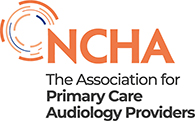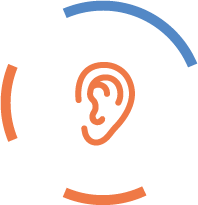This section should be read alongside causes of hearing loss.
- Tinnitus
- Central Auditory Processing Disorder (CAPD)
- Vertigo
- Benign paroxysmal positional vertigo (BPPV)
- Vestibular neuronitis
- All other causes of imbalance and dizziness
Tinnitus is the perception of sound in the absence of sound from the environment.
It might be described as a 'ringing in the ears' - in fact tinnitus comes from the Latin word for 'ringing'. People can also experience different sounds - e.g. a buzzing, humming, grinding etc.
The impact of tinnitus varies from person to person.
How common is tinnitus?
Estimates vary based on questions asked. Therefore, ranges are given here.
- 10.1% to 14.5% of people might experience tinnitus [1]
- Of these 20% are likely to seek support for bothersome tinnitus - i.e. 2% to 2.9% of people will have tinnitus that they seek help for [2]. 0.5% of the population might have tinnitus that severely affects their ability to lead a normal life [3]
- Prevalence varies with age - e.g. some studies suggest that it increases up to age 70 and then stabilises or decreases, although there is some uncertainty about this finding [2]
- People with hearing loss are more likely to experience tinnitus [2]
Learn more by visiting, NHS, NICE or BMJ Best Practice
Central Auditory Processing Disorder (CAPD)
Disorders of central auditory processing, also known as auditory processing disorder (APD), can result in hearing difficulties. In these cases, the audiogram is normal, but individuals might complain about not being able to hear clearly.
How common is CAPD?
- Prevalence data for auditory processing disorders is both variable and scarce [4]
- It is estimated that 0.5% to 1% of the population have CAPD, with a higher prevalence in children - e.g. some estimates suggest a prevalence of between 2% and 7% in children [5]
- One UK research project reported that auditory processing disorders might make up 5.1% of the caseload in children's audiology, but just 0.9% of the caseload in adult clinics [6].
Learn more about auditory processing disorder on NHS.UK.
Vertigo is the perception of spinning or rotation of the person or their surroundings in the absence of any actual physical movement.
How common is vertigo?
- GP working full time is likely to see 10 to 20 people with vertigo in one year [7]
- One systematic review notes that lifetime prevalence of "bad enough" vertigo is between 3% and 10% [8]
Learn more about vertigo on the NICE website.
Benign paroxysmal positional vertigo (BPPV)
BPPV is a disorder of the inner ear. People with BPPV can experience vertigo with changes in the position of the head.
How common is BPPV?
- Lifetime prevalence is estimated to be 3.2% in females and 1.6 in men [9]
- 1 year incidence estimated range is between 0.06% and 0.6% [8]
- Can occur at any age but peak incidence is between 50 and 70 years of age [9].
Learn more about BPPV on the NICE website.
Vestibular neuronitis is a disorder that is typically a prolonged vertigo of peripheral origin which is acute, isolated and spontaneous. Read more.
All other causes of imbalance and dizziness
Other central nervous system or general medical causes of imbalance and dizziness.
How common is it?
One systematic review notes lifetime prevalence of "bad enough" dizziness between 17% and 30%. However, it is important - when planning services - not to rely on lifetime prevalence alone.
Originally published: 2015
Reviewed: September 2020
Next review date: September 2021
Info: resource updated and reformatted for new website in 2020.
Reference and notes
[1] Davis, A and El Rafaie. A. Epidemiology of Tinnitus.Cited in Tyler (E.d). Tinnitus handbook. Cited in Ceranic and Luxon, 238f pp.3594-3619. Scott-Brown's Otorhinolaryngology, Head and Neck Surgery, Volume 3. Edward Arnold (Publishers) Ltd and BMJ Best Practice, Tinnitus, 22 Jan 2016
[2] Møller, A. 2011. Epidemiology of Tinnitus.pp 29-39 Chapter five in Textbook of Tinnitus. Springer New York Dordrecht Heidelberg London. ISBN 978-1-607761-144-8
[3] Coles, R.R.A. (1984) Epidemiology of tinnitus: (1) prevalence.Journal of Laryngology and Otology Supplement 9(), 7-15.
[4] "Prevalence rates of auditory processing disorder in both children and adults have been difficult to confirm, and reports in the literature are inconsistent. Intuitively, prevalence rates should differ across age of the population; overall, the research suggests that audiometry process disorder is relatively infrequent in children and young adults, but quite common in adults with brain injuries, (for example, with traumatic brain injury in veterans), and very common in seniors". Ref: Canadian Interorganizational Steering Group for Speech-Language Pathology and Audiology 2012. Canadian Guidelines on auditory processing disorder in children and adults: assessment and intervention.
[5] Chermak G. and Musiek. 1997. Central Auditory Processing Disorders: New Perspectives. San Diego, CA: Singular Publishing Group. Cited in Canadian Interorganizational Steering Group for Speech-Language Pathology and Audiology 2012. Canadian Guidelines on auditory processing disorder in children and adults: assessment and intervention; Musiek FE,Gollegly KM, Lamb LE, Lamb P. Selected issues in screening for central auditory processing dysfunction. Semin Hear 1990;11:372-83
[6] Hind, S.E. at al. 2011. Prevalence of clinical referrals having hearing thresholds within normal limits. International Journal of Audiology. 50:708-716.
[1]Barraclough, K. and Bronstein, A. (2009) Vertigo.BMJ339(), b3493. Cited in http://cks.nice.org.uk/vertigo#!backgroundsub:2
[7] Barraclough, K. and Bronstein, A. (2009) Vertigo.BMJ339(), b3493. Cited in http://cks.nice.org.uk/vertigo#!backgroundsub:2
[8] Murdin, L. and Schilder G. 2014. Epidemiology of Balance Symptoms and Disorders in the Community - a systematic review
[9] BMJ, 27 March 2015, Best Practice - Benign paroxysmal positional vertigo

 Your hearing and aural health
Your hearing and aural health  Commissioners and Policymakers
Commissioners and Policymakers  Member support and guidance
Member support and guidance News and views
News and views
 Hearing map
Hearing map
